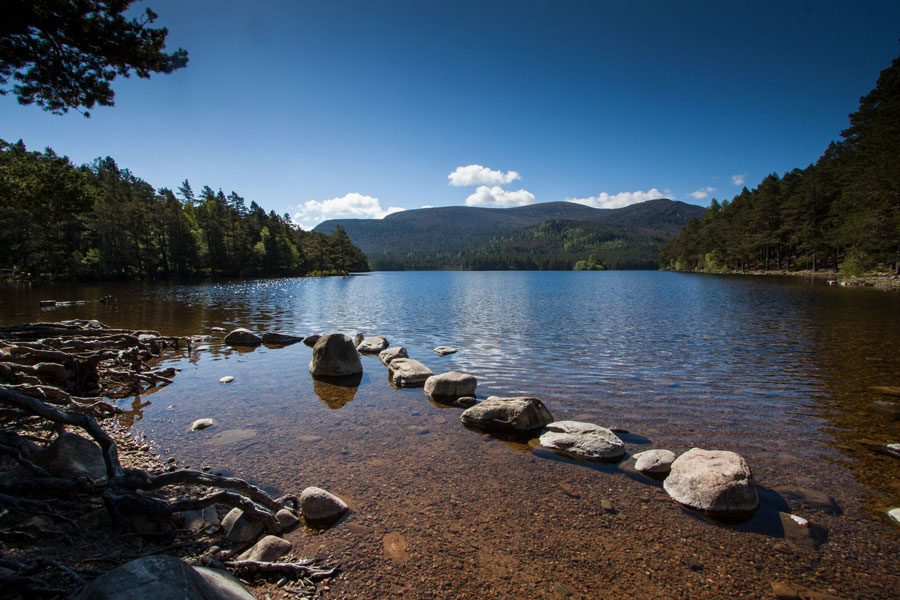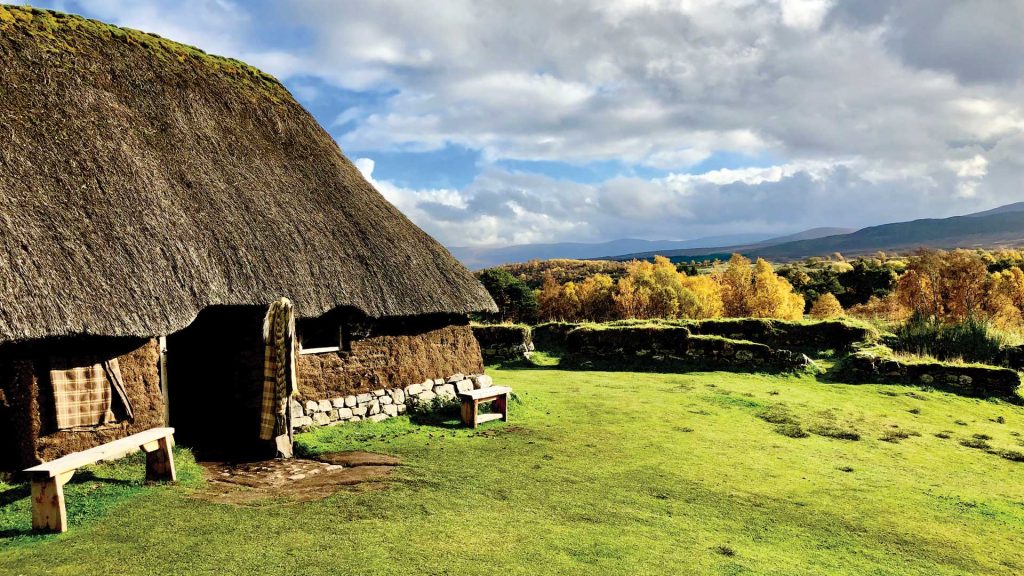The Cairngorm National Park is an extensive area of outstanding natural beauty. At approximatley 1,400 square miles this makes it the largest National Park in Great Britain. It is a land dominated by rock and stream, river and mountain, history and heritage. Welcome to a region of contrast, a land of forest and loch, with all the amenities and entertainments of a modern holiday centre in this truly unspoilt part of the world.

When the winter snow is melting, the mountains and glens take on a new lease of life. The return of the Osprey to the Highlands heralds the arrival of warmer days. Now summer, the heart of the year, with its endless days, everchanging colours and staggering scenery provides a perfect backdrop for many outdoor activities.
The awe-inspiring King of Fish, the Silver Salmon, can be seen making its way to the spawning grounds in the shaded pools at the tribituaries of the River Spey. The wooded river banks and heather clad mountains that dominate the Highlands provide protection and refuge for the herds of majestic Red Deer that can be viewed roaming the locality.

In time a taller forest of birch and juniper developed, and the trees of more temperate climates, such as Scots pine, oak, hazel, alder and ash, gradually spread in from the lowlands as the land mellowed under the warm post-glacial sun. When man first appeared as a hunter gatherer in the Highlands about 8,000 years ago, all except the highest and wettest land may have been covered with trees. The ‘Caledonian Forrest’ of Scots pine covered much of the drier soils of the eastern highlands.
The Rivers Dee and Spey all run through the Cairngorm National Park and their beautiful valleys contribute to the landscape. The high quality of the river water is important for Salmon fishing and the distillers of Whisky, for which the area is famous.
.

As far a we know, all the wild plant and animal life in the Highlands have colonized the area during the past 15,000 years. The bare debris of gravel left behind after the ice age was first clothed with vegetation characteristic of the Scandinavian tundra, mosses, scrubby willows and dwarf birches also hardy plants such as heather and crowberry.
In time a taller forest of birch and juniper developed, and the trees of more temperate climates, such as Scots pine, oak, hazel, alder and ash, gradually spread in from the lowlands as the land mellowed under the warm post-glacial sun. When man first appeared as a hunter gatherer in the Highlands about 8,000 years ago, all except the highest and wettest land may have been covered with trees. The ‘Caledonian Forest’ of Scots pine covered much of the drier soils of the eastern highlands.

In the milder, more humid climate of the west, oak dominated the lower slopes but in the harsher peatland landscape of the far north, woodland may have been confined to nooks of deep soil in the coastal glens. Sutherland and Caithness probably never supported much more than an open scrub of birch, juniper and willow. The Highlands used to home to many creatures, including the Wolf, Lynx, Bear, Elk and wild Cattle. Sadly none of these remain in existance although some of these animals can still be seen in the Highland Wildlife Park which is only 5 miles from the Duke Of Gordon.
